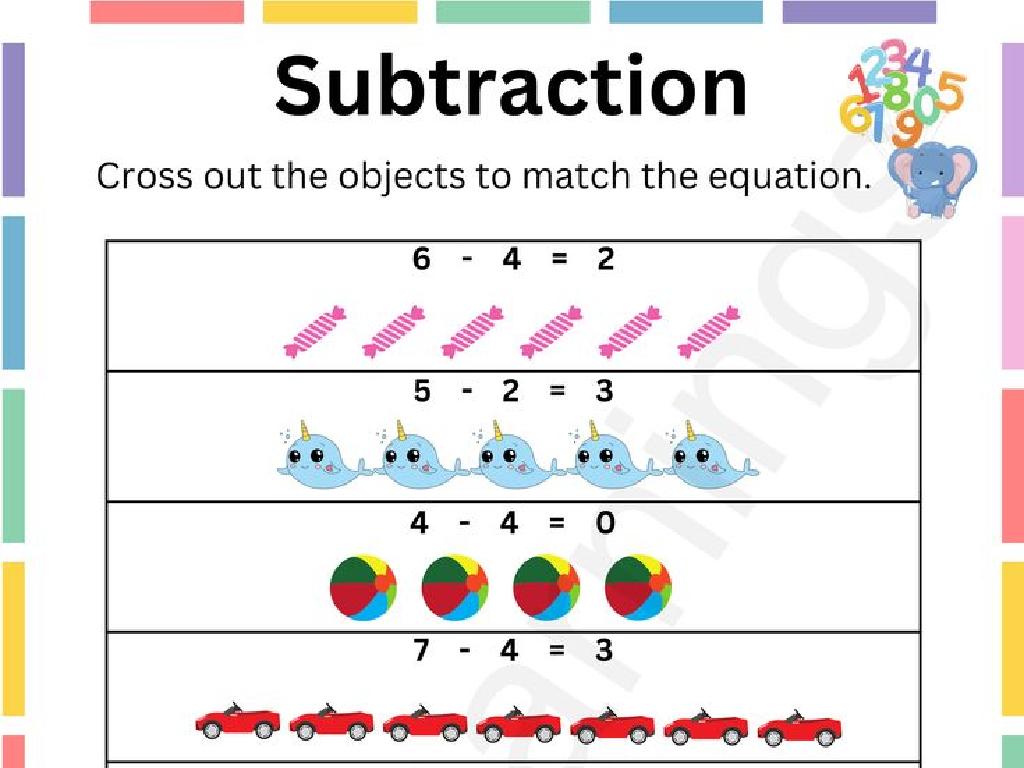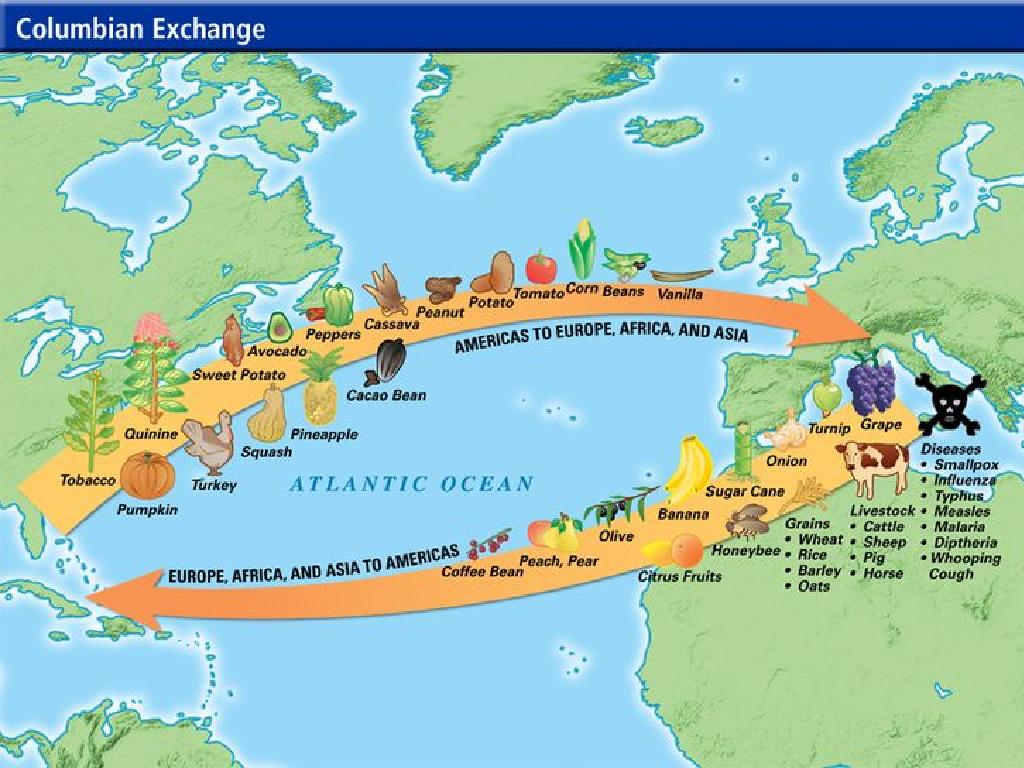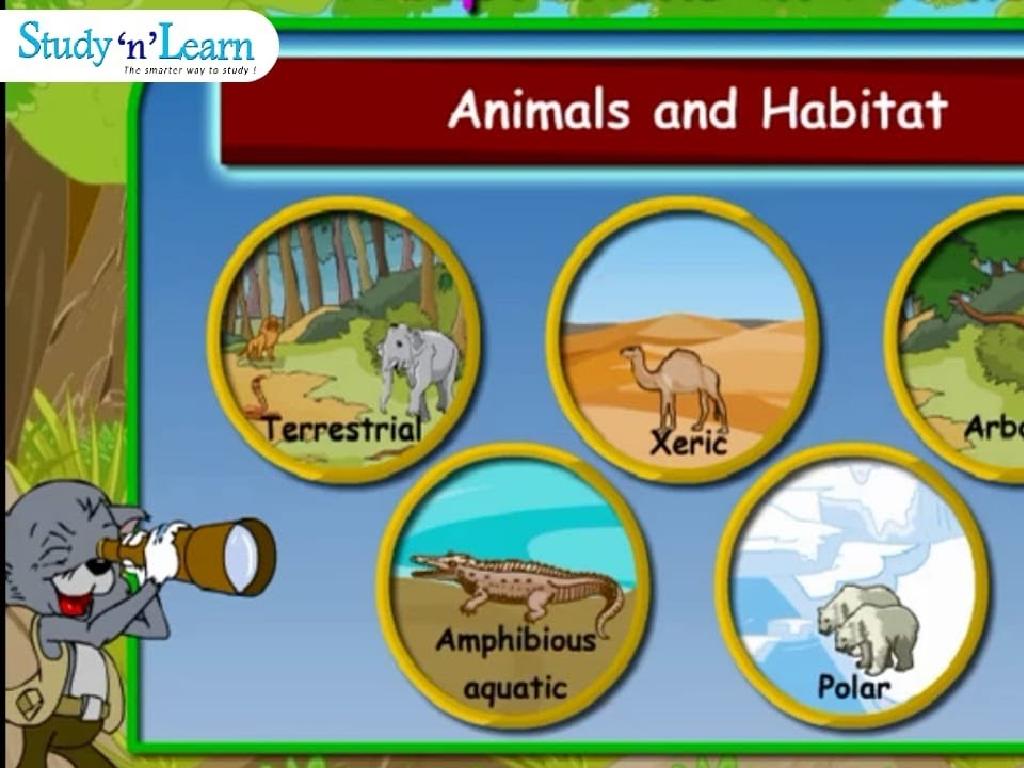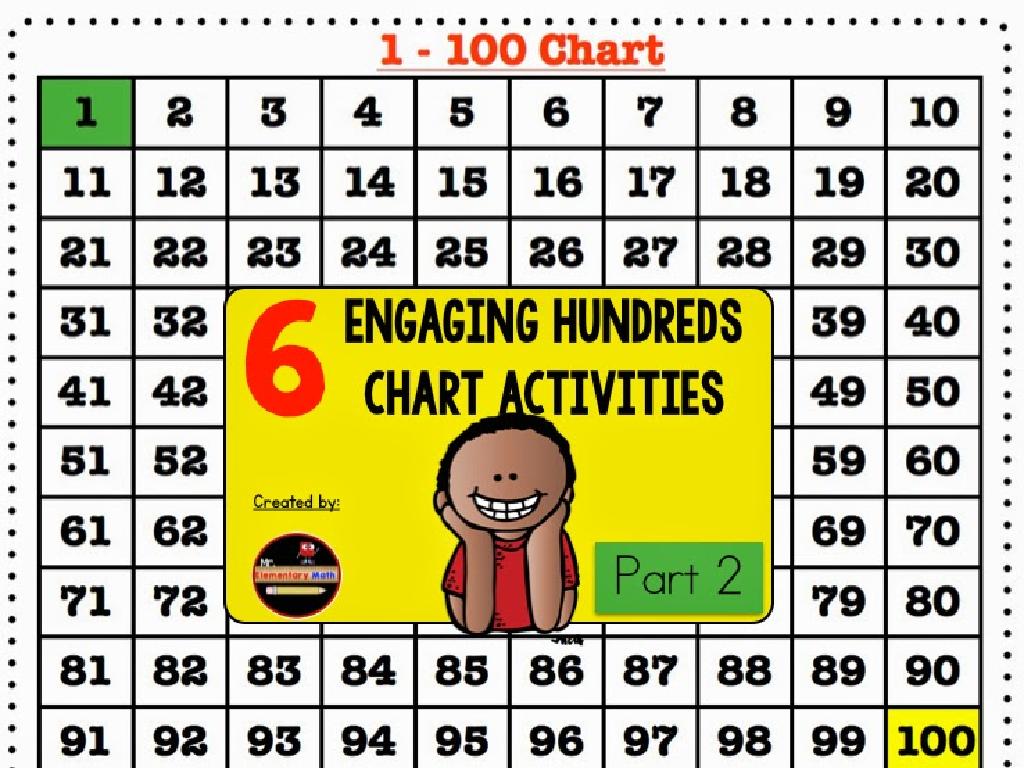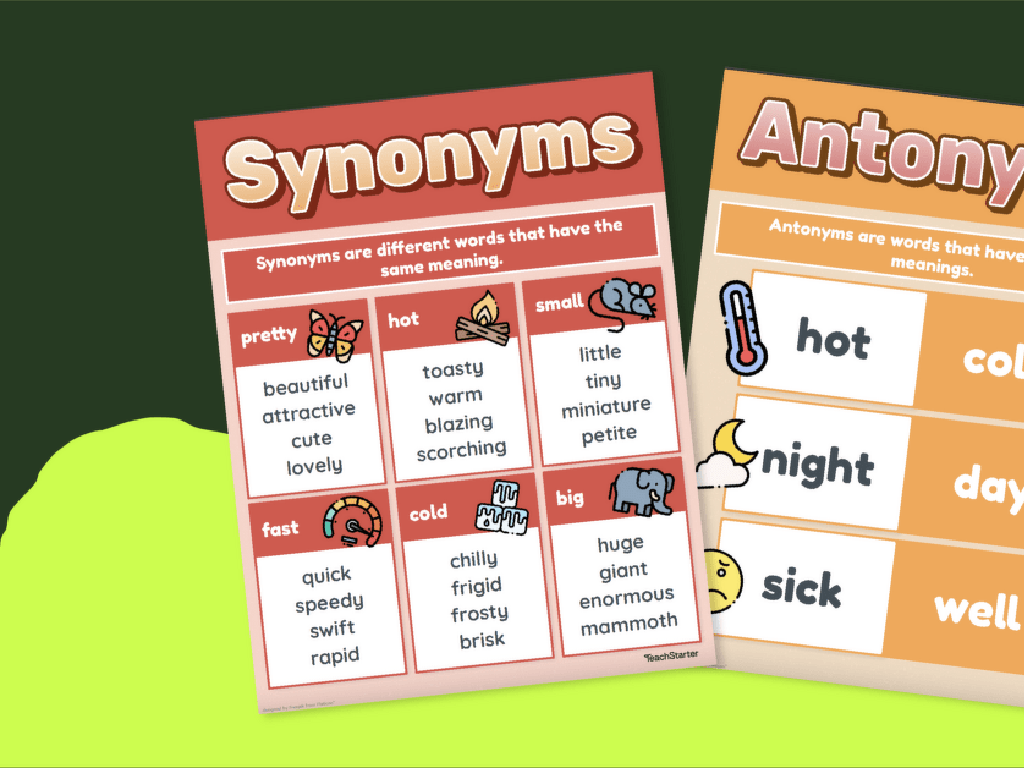Select Solid Shapes
Subject: Math
Grade: Pre-k
Topic: Solid Shapes
Please LOG IN to download the presentation. Access is available to registered users only.
View More Content
Welcome to Solid Shapes!
– Greeting with a smile
– Introduction to solid shapes
– Solid shapes are 3D like cubes, spheres
– Learning to identify shapes
– We ll look at shapes and name them
– Selecting solid shapes
– Practice picking out shapes from a group
|
Begin the class with a warm and enthusiastic greeting to create a welcoming atmosphere. Introduce the concept of solid shapes by explaining that unlike flat shapes, solid shapes have three dimensions: length, width, and height. Use tangible examples like blocks (cubes), balls (spheres), and cans (cylinders) to illustrate. Engage the students by showing them different solid shapes and asking them to name them. Then, move on to an activity where students select specific solid shapes from a mixed group, reinforcing their ability to identify and differentiate between shapes. The goal is to make the learning process interactive and enjoyable.
Exploring Solid Shapes
– Solid shapes are 3D objects
– Unlike a drawing, they have depth
– Examples: cubes, spheres, cylinders
– A dice is a cube, a ball is a sphere
– Solid shapes can be touched
– They’re not flat like a piece of paper
– We can hold and pick up solids
|
This slide introduces Pre-K students to the concept of solid shapes, emphasizing their three-dimensional nature. Start by explaining that unlike pictures or drawings, solid shapes have depth, which means they’re not flat and can be picked up and held. Use tangible examples like a dice for a cube, a ball for a sphere, and a can for a cylinder to help them relate to these shapes in their everyday environment. Encourage the students to touch and interact with real-life examples of these shapes to reinforce their understanding. The goal is to help them recognize and differentiate between solid shapes and flat shapes through hands-on experience.
Meet the Shapes!
– Meet Cara the Cube
– Cara has 6 equal square faces
– Say hi to Sammy the Sphere
– Sammy is round like a ball
– Greet Cindy the Cylinder
– Cindy has 2 circle ends and a curved side
– Find shapes around us
|
This slide introduces young learners to solid shapes through fun and relatable characters, making it easier for them to remember and identify each shape. Cara the Cube can be related to blocks or dice, Sammy the Sphere to balls or marbles, and Cindy the Cylinder to cans or drums. Encourage the children to look around the classroom and find objects that match Cara, Sammy, and Cindy. This activity not only makes learning interactive but also helps students recognize these shapes in their everyday environment. The teacher should prepare physical examples of each shape to show during the presentation and plan a classroom hunt activity for the next class to reinforce the learning.
Let’s Find Solid Shapes Around Us
– Solid shapes are everywhere
– Identify shapes in objects
– Look at pictures: Can you find a sphere, cube, or cylinder?
– Use simple words for shapes
– Repeat shape names together
– Let’s say ‘cube’ when we see a dice or ‘sphere’ for a ball
|
This slide is aimed at helping Pre-K students recognize and name solid shapes in their environment. Start by explaining that solid shapes are not flat; they have depth, like the objects they play with. Show them pictures of everyday items and ask them to point out the shapes they see, such as a ball (sphere), a box (cube), or a can (cylinder). Use simple language appropriate for their age and understanding. Repetition is key at this developmental stage, so encourage them to say the names of the shapes out loud multiple times. This will help solidify their understanding and recall of the shape names. For the activity, have a variety of solid shape toys for them to handle and identify.
Solid Shapes Matching Game
– Play matching game with shapes
– Match shapes to everyday items
– ‘Cara the Cube’ toy block example
– Find a cube-shaped object like a block and say ‘This is Cara the Cube!’
– Cheer on and praise correct matches
|
This interactive game is designed to help Pre-K students recognize and match solid shapes with objects they are familiar with. Use toys and items from the classroom to represent different solid shapes like cubes, spheres, and cylinders. For example, a toy block can represent a cube, and you can introduce it as ‘Cara the Cube’. Encourage the children to participate by finding items that match the shapes you show. Praise them for correct matches to reinforce learning and build confidence. This activity not only makes learning fun but also helps with shape identification and cognitive association between abstract concepts and real-world objects. Prepare a variety of solid shape toys and corresponding everyday items for the activity, and consider having multiple examples for common shapes.
Shape Sorting Fun!
– Introduction to shape sorting
– Demonstration of shape sorting
– Show how each shape fits into its matching slot
– Students practice sorting
– Give each child a turn to sort shapes
– Encouragement and guidance
|
This slide introduces a hands-on activity for Pre-K students to learn about solid shapes through a shape sorting game. Begin by explaining the activity and showing the different solid shapes available. Demonstrate how to sort each shape into the corresponding slot on the shape sorting toy. After the demonstration, allow each student to try sorting the shapes themselves. Provide assistance and positive reinforcement as they work through the activity. This exercise helps develop their understanding of geometric shapes and their fine motor skills. Prepare to manage the class by having multiple shape sorting sets or by creating stations to ensure that each child gets a turn without waiting too long.
Class Activity: Shape Hunt Adventure
– Organize a classroom shape hunt
– Provide bags for shape collection
– Assist in identifying solid shapes
– Look for cubes, spheres, cones, etc.
– Select the correct shapes together
– Ensure shapes like blocks and balls are collected
|
This interactive activity is designed to help Pre-K students recognize and differentiate between various solid shapes in a fun and engaging way. Set up different stations around the classroom with a variety of solid shapes such as blocks (cubes), balls (spheres), toy cones, and cylinders. Provide each student with a small bag or container for their collected shapes. As they move through the stations, assist them in identifying each shape, discussing the names and characteristics like the number of faces, edges, and vertices. Encourage them to touch and feel each object to better understand its form. After the hunt, regroup and review each shape together, reinforcing their learning. For the teacher’s notes, include additional activities such as sorting the shapes by type, creating patterns, and even integrating storytelling by using the shapes as characters or elements of the plot.
Show and Tell: Learning Solid Shapes
– Gather in a circle with friends
– Show the shapes you found
– Did you find a sphere, cube, or cylinder?
– Name each shape out loud
– Practice saying ‘sphere’, ‘cube’, ‘cylinder’
– Receive praise for your efforts
|
This slide is for a class activity aimed at reinforcing the recognition and naming of solid shapes among Pre-K students. Start by gathering the children in a circle to create an inclusive and focused environment. Each child will have the opportunity to show the solid shapes they have found and name them aloud, which encourages public speaking and cognitive recall. As they present, offer praise and positive reinforcement to build their confidence. This activity also allows the teacher to correct any misconceptions and reinforce the correct names of the shapes. Prepare a variety of solid shapes for children who may not have brought one, ensuring everyone can participate. Possible shapes include a sphere (like a ball), a cube (like a dice), and a cylinder (like a can).
Great Job Learning Solid Shapes!
– Recap of today’s solid shapes
– We learned about cubes, spheres, and cones.
– Celebrate your hard work
– Exciting shapes in the next class
– Next time, we’ll see how shapes fit together!
– Keep exploring shapes at home
– Try to find solid shapes around your house.
|
Today’s class was all about introducing the little learners to the world of solid shapes. As we conclude, it’s important to go over the shapes we’ve learned to reinforce their understanding. Acknowledge the effort the students have put into learning and exploring new concepts. This positive reinforcement will encourage them to continue learning with enthusiasm. Give them a sneak peek of what’s coming in the next class to pique their interest. Encourage them to look around their environment at home and identify solid shapes they’ve learned about today, fostering a connection between their learning and the real world.

